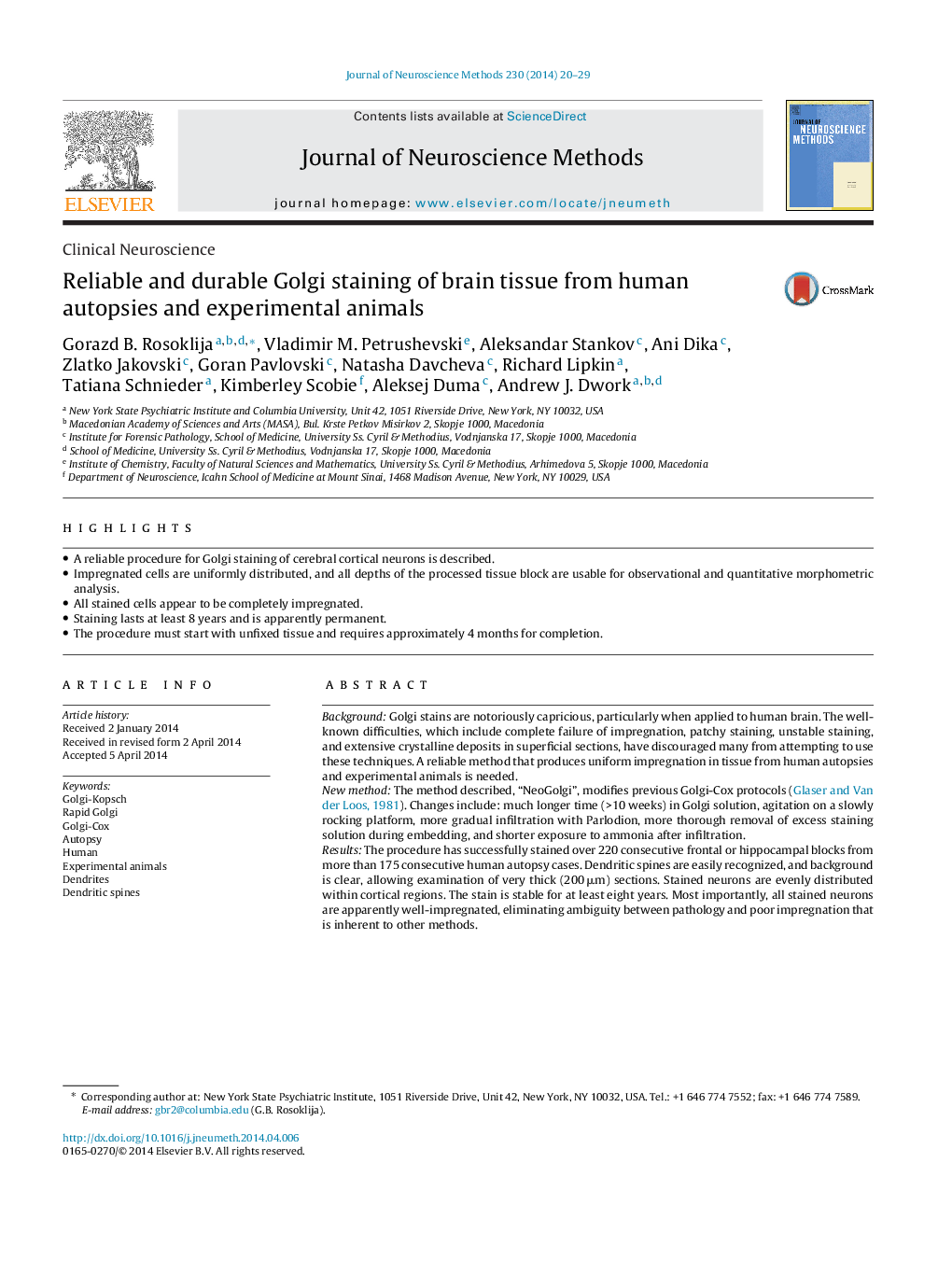| کد مقاله | کد نشریه | سال انتشار | مقاله انگلیسی | نسخه تمام متن |
|---|---|---|---|---|
| 4334934 | 1614639 | 2014 | 10 صفحه PDF | دانلود رایگان |
• A reliable procedure for Golgi staining of cerebral cortical neurons is described.
• Impregnated cells are uniformly distributed, and all depths of the processed tissue block are usable for observational and quantitative morphometric analysis.
• All stained cells appear to be completely impregnated.
• Staining lasts at least 8 years and is apparently permanent.
• The procedure must start with unfixed tissue and requires approximately 4 months for completion.
BackgroundGolgi stains are notoriously capricious, particularly when applied to human brain. The well-known difficulties, which include complete failure of impregnation, patchy staining, unstable staining, and extensive crystalline deposits in superficial sections, have discouraged many from attempting to use these techniques. A reliable method that produces uniform impregnation in tissue from human autopsies and experimental animals is needed.New methodThe method described, “NeoGolgi”, modifies previous Golgi-Cox protocols (Glaser and Van der Loos, 1981). Changes include: much longer time (>10 weeks) in Golgi solution, agitation on a slowly rocking platform, more gradual infiltration with Parlodion, more thorough removal of excess staining solution during embedding, and shorter exposure to ammonia after infiltration.ResultsThe procedure has successfully stained over 220 consecutive frontal or hippocampal blocks from more than 175 consecutive human autopsy cases. Dendritic spines are easily recognized, and background is clear, allowing examination of very thick (200 μm) sections. Stained neurons are evenly distributed within cortical regions. The stain is stable for at least eight years. Most importantly, all stained neurons are apparently well-impregnated, eliminating ambiguity between pathology and poor impregnation that is inherent to other methods.Comparison with existing methodsMost methods of Golgi staining are poorly predictable. They often fail completely, staining is patchy, and abnormal morphology is often indistinguishable from poor impregnation. “NeoGolgi” overcomes these problems.ConclusionStarting with unfixed tissue, it is possible to obtain Golgi staining of predictably high quality in brains from human autopsies and experimental animals.
Journal: Journal of Neuroscience Methods - Volume 230, 15 June 2014, Pages 20–29
